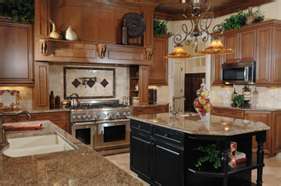Choosing Windows for a Sunroom Addition
Windows make a sunroom. When planning sunroom additions, you’ll need 20 or more windows, so the style, material, and price point you choose will have a huge effect on the project. There are hundreds of window options to choose from, and the selection process becomes far easier if you think about a few big-picture questions before you head to the showroom.
How efficient do you want to go?
Today’s standard windows ($700 to $1,000 each) are made from double-paned glass with a low-emissivity coating that helps block heat from entering in the summer and escaping in the winter. They’re twice as efficient as the single-paned windows used a couple of decades ago, but you can get windows that are even more efficient.
Some windows are triple-paned and filled with insulating argon gas—that kind of super efficiency can add $500 or more to the upfront cost per window. If you’re in an extreme climate, with either very hot summers or very cold winters, the energy savings payback may be well worth that added investment, especially if the windows qualify for up to $200 in a federal tax credit good through 2011 or a local incentive.
For most homes, however, a standard Energy Star-qualified window is plenty efficient. To find out what’s best for your climate, check out the Alliance to Save Energy’s window selection tool.
How should they open?
On a nice day, you want plenty of fresh air flowing through your sunroom. And the way your windows operate will determine how easy it is to throw your sunroom open to the fresh air—and close it back up when the air gets chilly at dusk. There are the five basic window types:
Fixed windows ($250 to $750 each) don’t open, and are typically used in solarium-style sunrooms (where the walls are made entirely of glass) or high up the wall in standard sunrooms, where you can’t reach them anyway.Slider windows ($500 to $750) consist of two sash (framed panes) that move side to side, one in front of the other.Double-hung windows ($750 to $1,000 each) have two sash that move up and down instead of side to side. This is likely what you have in your house already, so they could harmonize well with the existing home.Casement windows ($250 to $500) are hinged on one side and open out when you turn a hand crank. That means you’re able to open the entire window, unlike sliders and double-hungs, which can only be half open. Still, when opened, casements can obstruct the yard—and the crank systems on lower-end units tend to break after a few years, says Annapolis, Md., home inspector Jim Rooney.Awning windows ($250 to $500) are like casements turned on their sides, so the hinges are on top—and the window becomes a rain shield when open. They’re typically used high up in the room to allow warm air to escape.What material do you want?
You’ll also want to consider what your windows will be constructed from—a decision that’ll dictate not only how they look, but how much maintenance they need.
Vinyl windows ($300 to $800) never need painting on the inside or out. They’re economical, come in white and a handful of other colors, and look good on a simple home. For an upscale house, though, vinyl can look a bit incongruous.Wood windows ($400 to $1,000) offer a traditional, high-end appearance and can be painted to match the interior and exterior trim of your sunroom.Clad windows ($500 to $1,200) are made from wood but are covered with vinyl or aluminum on the outside. That “cladding” is available in a range of colors and never needs painting, so you get the look of wood on the inside with a low-maintenance of a paint-free exterior.Do you want divided lights?
Many houses have windows with divided lights—that is, a sash made up of small panes of glass separated by wood trim in, say, a six-over-six pattern. To get a divided light window in today’s double-paned glass means a custom order, which costs $2,000 plus per window.
But you can get simulated divided lights, which look almost identical to the real thing, for a $200 per window up-charge. Or you can get snap-in grills ($25 to $50 per window) that mimic the appearance of divided lights, at least from the inside, where the grilles get installed.





